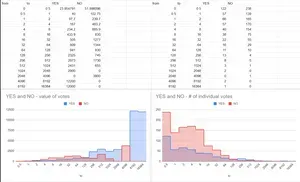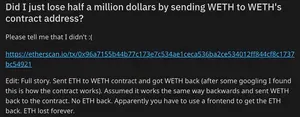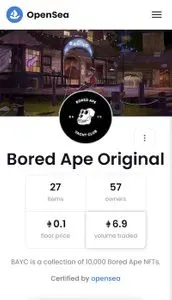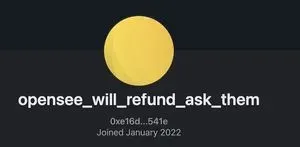Qubit continues to try to tempt the attackers who stole $80 million to return it, with increasingly-desperate messages
Wonderland protocol founder writes that the "Wonderland experiment is coming to an end", despite vote ongoing and majority of participants voting to continue
By raw numbers it appeared most investors opposed the idea, as many will receive miniscule amounts compared to their initial investments. However, the larger holders (most of whom bought in at low prices) stand to make money from the liquidation and some have supported winding down. Because the DAO voting operates in a plutocratic model, where people can vote based on how many tokens they hold, at one point votes from a relatively small number of whales were trending the vote towards supporting winding down even though 90% of individuals wanted the project to continue. The votes to continue had begun to beat out the votes to wind down when Daniele Sestagalli announced on Twitter on January 30, before the vote's scheduled end, that the "Wonderland experiment is coming to an end."
Ultimately, Sestagalli ended up respecting the wishes of the community, who decided to continue the project despite having lost 90% of their money, presumably in hopes of regaining some of the losses.
- "Wonderland votes out QuadrigaCX co-founder Sifu and is considering shutting down", The Block
- "Wind down Wonderland, and give the treasury back to its holders?" vote on Snapshot
- "ELI5 - Explain to me like I'm 5" - The consequences of WIP #4" post on r/WonderlandTIME
- "What is really happening with the vote" post on r/WonderlandTIME
- Tweet by danielesesta
Justin Bieber "buys" a Bored Ape for $1.3 million in a deal that is shady in one of two possible ways
Trader loses $510,000 trying to convert funds between two currencies
Transaction history on Etherscan shows they were the 265th person to make this mistake. Most people did so with far smaller amounts of WETH, although another unfortunate trader lost 115 WETH (at the time valued at $360,000) on August 11, 2021. A total of 432 WETH has been irretrievably lost to this contract this way since July 2018 — currently valued at $1.1 million.
Fake Bored Ape project pulls in $17,500 following high-profile endorsement of Bored Apes
Lazy Lion Ape Club rug pulls for 50 ETH ($125,000)
Khan Academy charity auction ends in blatant wash trade, and Khan Academy removing several former employees from alumni Slack channel for raising concerns
The auction ended on January 21, with a winning bid of 77 ETH (nearly $200,000) from ParagonsDAO, plus the promise of another 34 ETH ($87,000) donation from the DAO to Khan Academy. However, ParagonsDAO is a DAO created specifically to "play a key role in Parallel's governance" and "support the creation of an ecosystem for Parallel to thrive". Former Khan Academy employee S. M. Lundberg raised their concerns about the wash trading, and "KA elevat[ing] Parallel on its own channels to a largely underage and under-resourced user base" in the Khan Academy Slack, and was removed from the channel by Khan Academy founder Sal Khan. At least three other former employees were removed from the channel for criticizing the decision to engage with the NFT project, as was an additional person who protested the removal of those raising concerns.
Although the auction ended with more than $250,000 going to Khan Academy, it is likely that Parallel got the better deal here — Khan Academy is an enormous name to have promoting one's project. Sal Khan actively hyped the project in various spaces, including in an appearance on CNBC's Squawk Box.
87% of trades on LooksRare NFT platform reported to be wash trades
Wash trading is also a widespread tactic in the NFT space to artificially inflate the "value" of an NFT. Because it's relatively easy to create a pseudonymous cryptocurrency wallet, users will "sell" NFTs to themselves for large amounts to create the appearance of higher demand, and to try to convince other would-be buyers that the NFT is more valuable.










